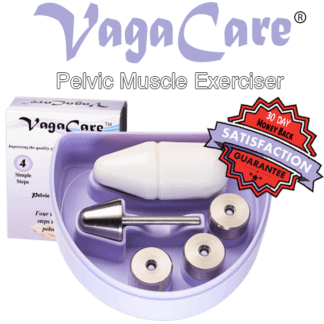Female Incontinence
The Effects of Female Incontinence & Treatment
It’s not a big secret that female incontinence is a major problem. Millions of women worldwide suffer from some type of urinary incontinence. Life events like pregnancy, childbirth, and menopause are all contributing factors. Older women will experience incontinence a lot more than younger women. Although this may be true, female incontinence doesn’t have any
preference. As a result,it can happen to women when they least expect it, despite age or physical condition.
Fortunately, female incontinence is often treatable and manageable. According to a statistics report by Phoenix Physical Therapy, 15 million US women are affected.[1] Equally important, there are 25 million adults suffering from some type of urinary incontinence. With this in mind, 75-80 percent of those are women. The effects of female incontinence are far greater than men who have urinary incontinence.
Did you know?
- 80 percent of US adults suffering from some type of incontinence are women
- 7 million women between the ages of 14 and 35, experience urinary leakage
- 30-50 percent of women 65 and older experience urinary leakage
The Social Effects of Female Incontinence?
There are a lot of women who report a wide range of female incontinence occurrences. Some women claim, when they sneeze, cough or laugh, they experience slight urinary leakage. However, some women report unexpected and frequent amounts of urinary leakage. On the contrary, the social effects of female incontinence are quite severe for some women. Isolation, depression, anxiety, and fear are just a few of the symptoms caused by incontinence.
Some women who suffer from significant leakage are prisoners in their own home. Hence, sending people to run errands for them and shop online for household supplies. They think it’s just a normal part of aging. They also believe nothing can be done about it. This is a false perception that needs to change. You don’t have to let urinary leakage run your life – do something about it.
What Causes Female Incontinence?
When a baby is pushed through the birth canal all kinds of things happen. The pressure and stretching in the birth canal puts your pelvic muscles under extreme pressures. Some women tend to deal with it better than others and recover more quickly. On the other hand, some young mothers don’t make out quite as well. For aging women, hormone levels can dry up the sensitive areas of the urethra and vagina.[2] This can cause the bladder to take urine away and cause leakage. Additionally, it can weaken their pelvic floor muscles, resulting in female incontinence.
Other common medical conditions that contribute to female incontinence include:
- Disability Movements: Includes progressive diseases like Parkinson’s and Alzheimer’s. It also includes chronic conditions like diabetes as well as those confined to a wheelchair. These types of disability movements for incontinence can require a neurological or medical specialist.
- Surgical Procedures: Women who have a hysterectomy can experience urinary incontinence on some level. It’s always best to talk to your surgeon about the effects of incontinence.
- Urinary Tract Infections: UTIs are side effects from different types of medicine as well as being constipation related. UTIs are one of the most readily treated conditions and causes of incontinence. A quick trip to your doctor can often times provide quick relief.
How to Treat Female Incontinence
In the first place, incontinence affects more than just aging women. Secondly, there’s no need to accept incontinence after childbirth. Thirdly, female incontinence can be managed and cured. Most women find help with the use of vaginal weights. Lastly, vaginal weights play a vital role in strengthening the pelvic floor muscles.
They can make a significant difference in urinary leakage and mad dashes to the restroom. It’s the best method to prevent social discomfort and embarrassment. If you want to stop female incontinence dead in its tracks? Do what millions of other women in your shoes have done. They bought and used vaginal weights to get their life back.
References:
- Phoenix Physical Therapy. “Urinary Incontinence in Women Statistics .” Retrieved from:http://phoenixpt.com/statistics/. February 19, 2019.
- Mary Ann E. Zagaria, MS, CGP, PharmD. (2011) “Atrophic Urethritis and Atrophic Vaginitis: Urogenital Symptoms of Menopause.” US Pharm. 2011;36(9):22-26
Showing the single result
Showing the single result


